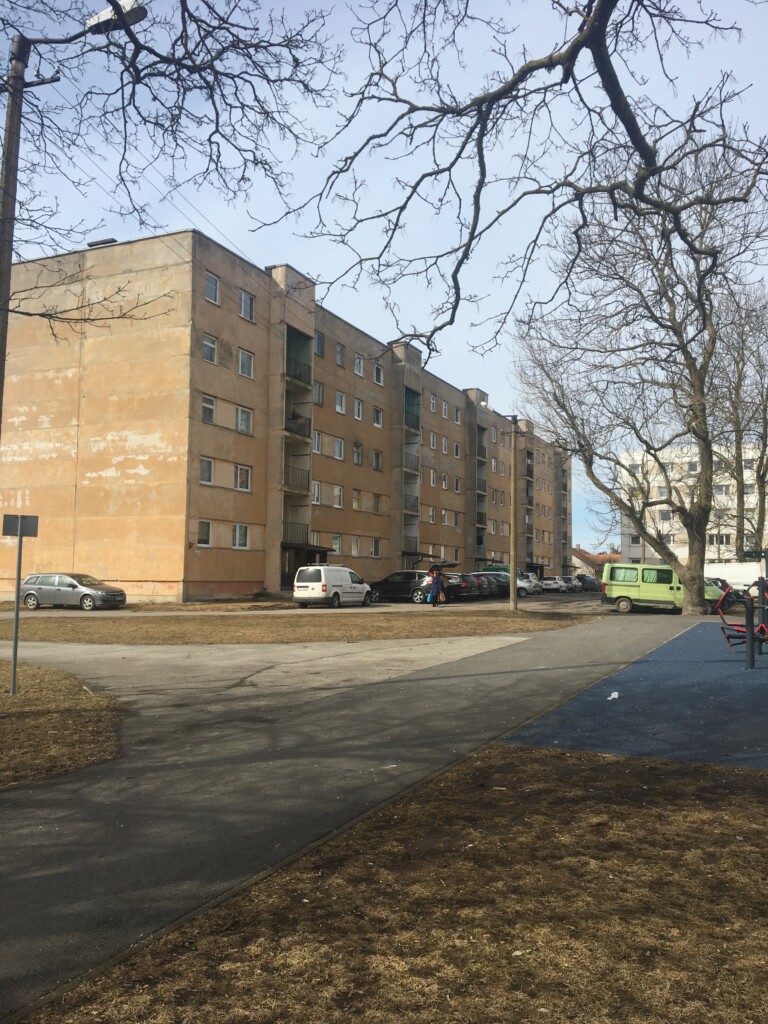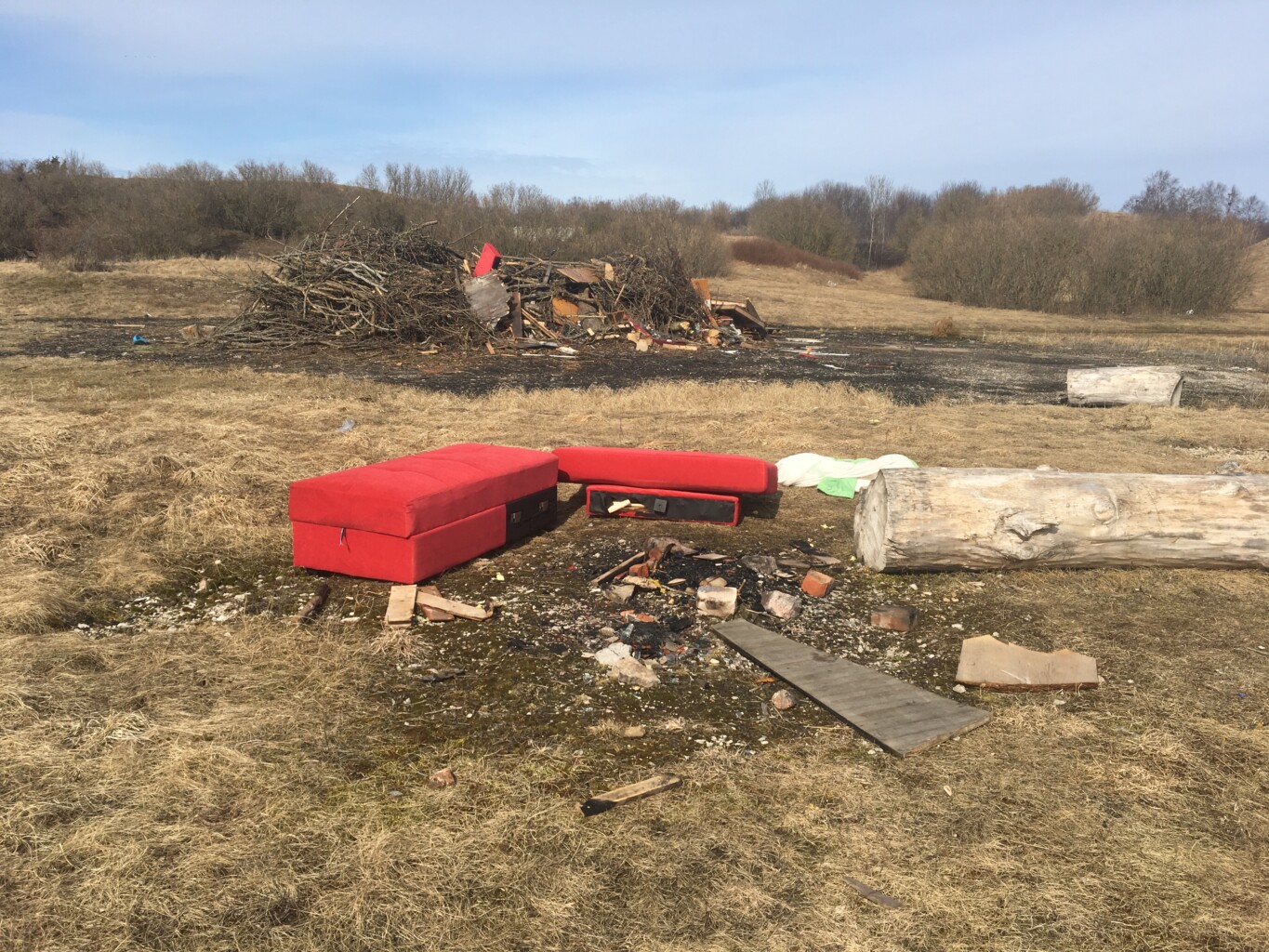
Situated on the Pakri peninsula in northwestern Estonia, roughly an hour’s train ride from Tallinn, lies Paldiski, a small town that was once a closed city during the Soviet era, serving a critical role as a major naval base and the site of the Soviet Union’s largest submarine training center. Its status as a closed city meant strict restrictions on access and travel; the city was essentially off-limits to non-residents and especially to foreigners. The town’s existence was barely acknowledged, and it was often omitted from maps and official documents to maintain operational security. Having read about Paldiski this place immediately came on top of my must-visit list during my trip to Estonia and if you are anything like me and enjoy exploring more quirky or “alternative” tourist destinations far off the beaten track, Paldiski is the place for you!
Impressions of Paldiski
Having taken the 1-hour train ride from Tallinn to Paldiski, the characteristic Soviet brutalist apartment buildings are immediately apparent as you make your way through the city. After walking around the town for a good 30 minutes to an hour, I eventually started to realize that I had barely seen any other people in this town, except for a few babushkas here and there. I thought to myself, with so many buildings around, there has to be more than a handful of people right? Then it dawned on me, that a large majority of the buildings stand abandoned, some completely overtaken by nature, while others are simply left to decay, like the people that once lived there left in a hurry.


Since 1989, Paldiski has lost more than half of its population, once reaching its peak at around 8,000 people in 1989, and today less than 4,000 people call Paldiski home. According to the latest poll, more than 50% of the remaining population in Paldiski, is comprised of ethnic Russians. During the Soviet era, Russian migration to Estonia and Paldiski was encouraged by the government to promote Russification, industrialization, and to increase the Soviet military presence, which in the end significantly altered Estonia’s demographics. Today more than 25% of Estonia’s population consists of ethnic Russians.

Following the collapse of the Soviet Union in 1991, Paldiski faced profound changes. The withdrawal of the Russian military from Estonia left behind abandoned infrastructure, leading to economic and social challenges for the remaining population, many of whom earned their livelihood from the army.

Paldiski was originally known as Rågervik and was a village of Estonia-Swedes in the 17th century. The town was later renamed “Baltiski Port” (Baltic Port) after the Russians conquered the village in the 18th century, due to its connection with the Baltic Sea. Over time “Baltiski Port” became “Baltiski” which later became “Paldiski”, the name it carries today. This etymology shows Paldiski’s historical importance as a maritime hub in the region.


As you keep moving around the city you eventually make your way to the the main square. Here where you’ll find a supermarket, a small cafe, and your local pharmacy. Lately, however, the government has made some efforts and refurbished the main square adding a few flowers and benches in recent years, a much-needed investment I agree! However, when I visited Paldiski a couple of years ago there was none of that, and the streets were deserted and lacked any kind of those amenities.

As you make your way down closer to the shore of Paldiski, you stumble upon more abandoned buildings with barbed wire fences, most likely belonging to the Russian Army that left the place after the collapse Soviet Union. The abundance of abandoned buildings and the lack of people gives you an eerie feeling about the place, as if it is a ghost town, where the past lingers heavily in the air




Even the residents acknowledge the eerie atmosphere of this place, as evidenced by graffiti covering the sides of buildings that reads, “Hello from Hell.” This unsettling vibe is no coincidence; Paldiski’s somber and eerie character has made it an ideal setting for several films.
The movie “Lilja 4-ever” is an example of a film that used Paldiski as a setting location specifically for its depressing ambiance.”Lilja 4-ever” is a poignant and dark movie portraying Lilja, a young girl left behind when her mother moves to the US. Alone and struggling in the former Soviet Union, Lilja’s life worsens when she’s tricked by Andrei, who promises her a better life in Sweden. Instead, she is forced into prostitution. The movie is as heartbreaking and saddening as it’s plot sounds.
How Paldiski Is Famous For Swedes
To Swedes (like myself), Paldiski is not known for being a village for Estonia-Swedes during the 17th century but rather for its role in the Swedish cult classic: “Torsk på Tallinn” (English: Hooked on Tallinn) a mockumentary from 1999 created by the comedy group Killingänget. The film humorously follows a group of Swedish men who embark on an organized tour to Tallinn, Estonia, to find love, participating in what is essentially a mail-order bride tour.
The film uses the backdrop of post-Soviet Estonia, including Paldiski, again for it’s dark and eerie character to highlight the stark contrast between the expectations of the Swedes and the reality they encounter in Estonia, which is a pretty grim one.
The movie’s satirical edge shines as Paldiski is ironically introduced by tour guides as a picturesque town, promising a stay at the “luxury resort” known as Paldiski Palace. The humor emerges from the stark disparity between these glorified expectations set by the tour guides and the grim reality that unfolds, portraying Paldiski in a light that’s humorously at odds with its actual state.

Before planning my trip to Estonia, I was half-convinced that Paldiski was a figment of cinematic imagination rather than a real location. Yet, a few Google searches quickly revealed the reality: both Paldiski and the so-called Paldiski Palace are very much real. This awakened my interest in the city of Paldiski and led me to immerse myself in its history as a closed Soviet City.

Apparently, from what I read on the internet the original use for the building known to Swedes as Paldiski Palace, was a club for Soviet military officers. Not 100% sure if that’s the case, but still pretty interesting.
However, I did a recent search on it on Google Maps and it seems like the building has been demolished. What a shame! I’m just happy that I had the opportunity to see its beauty in real life.
Conclusion
With new investments from the Estonian government flowing into Paldiski, the town’s previous depressing reputation is gradually diminishing, and also hopefully enhancing the quality of life for its citizens. Paldiski has undoubtedly experienced significant historical events, a fact that still permeates its atmosphere. If you’re seeking an unconventional destination that promises to leave a lasting impression, do consider the brief 1-hour trip from Tallinn to Paldiski.
